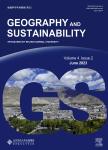Toward inclusive list-making for trade liberalization in environmental goods to reduce carbon emissions
作者机构:School of Geography and Ocean ScienceNanjing UniversityNanjing 210023China
出 版 物:《Geography and Sustainability》 (地理学与可持续性(英文))
年 卷 期:2023年第4卷第3期
页 面:200-212页
核心收录:
学科分类:0830[工学-环境科学与工程(可授工学、理学、农学学位)] 083001[工学-环境科学] 08[工学] 0705[理学-地理学]
基 金:supported by the National Natural Science Foundation of China(Grants No.42271178 and 41801104).
主 题:Carbon emissions Global environmental governance Environmental goods Inequality Product sophistication
摘 要:The Asia-Pacific Economic Cooperation(APEC)is contemplating expanding its list of environmental goods(EG)for trade liberalization to fight climate change.In support of doing so,this study proposes that a long list that retains controversies is better for carbon emission reduction than a short common list.This study examines four mechanisms of longer lists:enlarging market scales,enriching product mixes,enhancing product sophistication,and enriching trade patterns.Using China’s emerging EG trade during the 2001-2015 period as a case study,this study compares four EG lists with different EG.The results show that:(1)a longer list reduces carbon emissions from both imports and exports,making domestic regions with different advantages have better chances of improving carbon efficiencies.(2)Product sophistication reduces the emission gap between trading partners,regardless of the length of EG lists.(3)China’s EG exports contribute to carbon reduction in leading regions,while EG imports provide laggard regions with better chances of reducing carbon emissions.These findings provide three implications for future list-making:it is important to(1)seek a long and inclusive list rather than a short common list,(2)shift the focus from environmental end-use to the technological contents of products,and(3)balance the demand of laggard regions to import and the capacity of leading regions to export.



